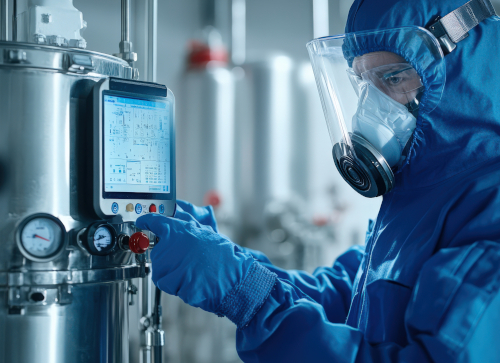The Importance of Medical Services During The Pandemic
A Day in the Life of a Medical Gas Engineer
More Than Pipes and Pressure Gauges
When most people walk into a hospital, they might notice the clean floors, the buzz of activity, or the rows of medical devices—but rarely do they think about what’s behind the scenes keeping everything running safely. That’s where medical gas engineers come in. Their job might not be front and centre, but without them, critical services like oxygen, nitrous oxide and medical air wouldn’t reach the patients who need them most.
So what does a typical day in the life of a medical gas engineer look like? It’s a balance of technical precision, compliance with HTM 02-01 standards and good old-fashioned hands-on problem-solving. One moment they’re checking the purity levels of medical gas cylinders, the next they’re crawling through a plant room diagnosing a drop in line pressure. And yes—sometimes it involves tracing leaks in medical gas pipelines that only reveal themselves at the worst possible time.

Day in the Life of a Medical Gas Engineer
No two days are quite the same, but here’s a snapshot of what a typical shift might involve for our engineers:
- Early Start: Grab a coffee, check job sheets, review site drawings, and load up the van with everything from flow meters to manifold spares.
- First Stop – Routine Maintenance: Head to a hospital to carry out planned maintenance on a medical air plant. Test pressures, check filters, inspect alarms—tick the boxes, but never rush it.
- Unexpected Call-Out: Midway through, a theatre suite reports an issue with a terminal unit. Detour required. Time to investigate, replace parts and double-check flow rates to keep everything compliant and safe.
- Documentation and Reporting: Every job gets logged and signed off. Whether it’s validating medical gas pipeline systems or confirming gas purity, compliance is everything.
- Final Job – Commissioning: End the day installing and testing a newly expanded pipeline in an ICU. Ensure every outlet is labelled, flow tested and signed off before the area is released for use.
And throughout it all, they’re liaising with estates teams, theatre staff, and suppliers—keeping communication skills sharp, clear and calm, especially when time is tight and the stakes are high.
What Makes It All Worthwhile About Medical Engineering?
Working as a medical gas engineer means carrying the quiet responsibility of keeping patients safe—without the spotlight. Every task, from routine inspections to emergency call-outs, is underpinned by expertise in mechanical engineering, electrical engineering, and even aspects of biomedical engineering. It’s a role within the field of engineering that demands a deep understanding of systems, unwavering attention to detail, and the ability to handle cutting-edge environments in healthcare.
The job is far from one-dimensional—it blends engineering mechanical skills with technology, sometimes overlapping with disciplines like computer science and life science, especially when working with smart monitoring systems. Whether it’s contributing to rehabilitation engineering through reliable gas delivery or supporting clinical engineering teams, there’s a sense of purpose that runs through every connection and pipeline.
At Midland Medical Services, we don’t just see it as maintaining systems—we see it as supporting the people who rely on them. Our engineers are trusted, skilled professionals who thrive on problem-solving, system safety, and ensuring that critical infrastructure is always ready.
So next time you walk through a hospital and see a small team checking pipes, inspecting alarms or reviewing plans, you’ll know—they’re not just ticking boxes. They’re making sure that, behind the scenes, everything flows exactly as it should.
